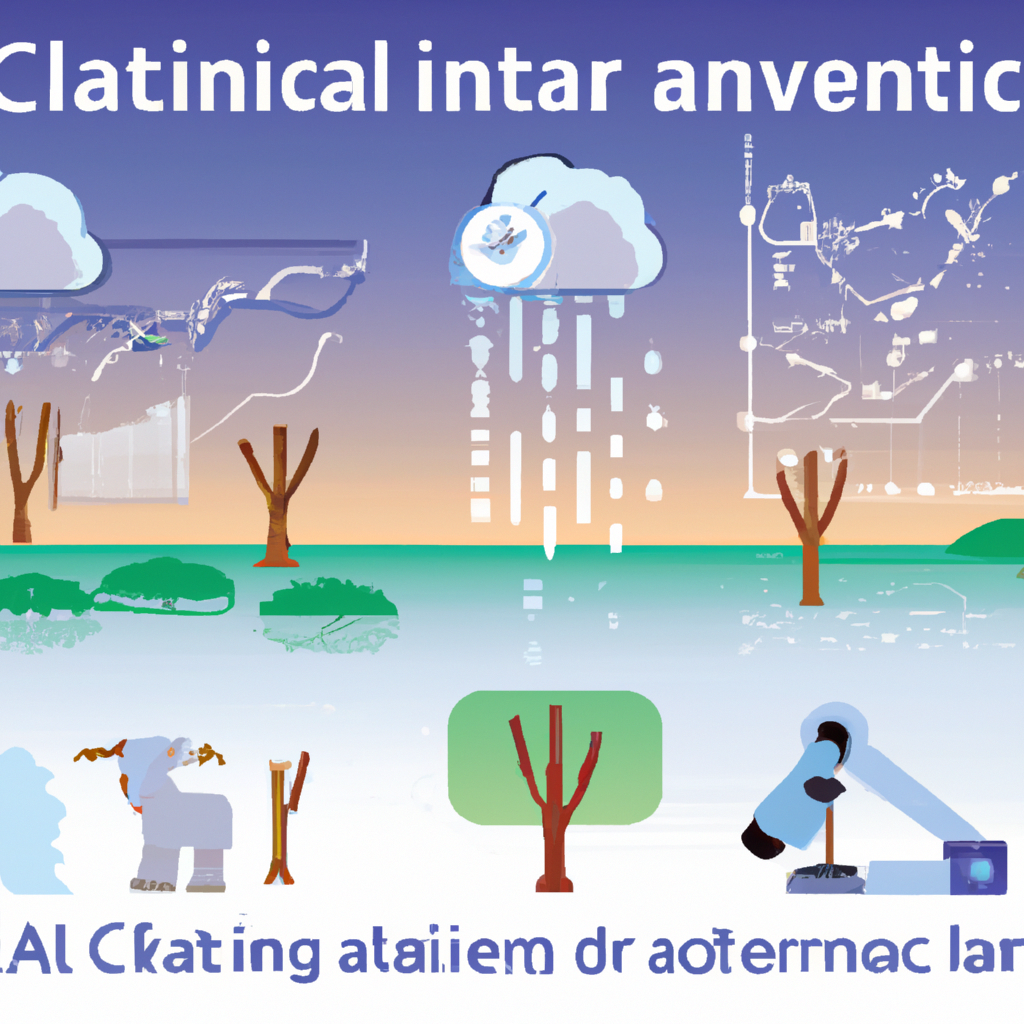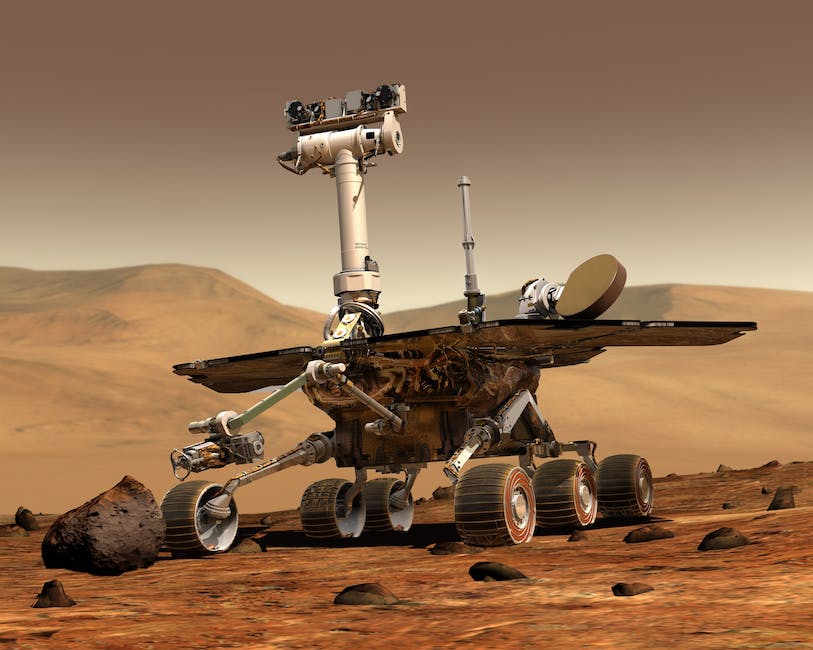-
Table of Contents
- Introduction
- Exploring the Potential of AI Tools to Enhance Climate Change Research
- How AI Tools are Helping to Improve Climate Change Predictions
- The Benefits of Using AI Tools to Analyze Climate Change Data
- The Challenges of Integrating AI Tools into Climate Change Research
- Examining the Impact of AI Tools on Climate Change Mitigation Strategies
- Conclusion
“Unlocking the Power of AI to Help Solve the Climate Crisis.”
Introduction
The use of Artificial Intelligence (AI) tools in climate change research is becoming increasingly important as the world faces the challenge of global warming. AI tools can help scientists better understand the complex dynamics of climate change and develop more effective strategies for mitigating its effects. AI can be used to analyze large datasets, identify patterns, and make predictions about future climate conditions. AI can also be used to develop models that simulate the effects of climate change on different ecosystems and to develop strategies for adapting to climate change. AI tools can also be used to develop more efficient and cost-effective solutions for reducing greenhouse gas emissions. In this article, we will discuss the various ways in which AI tools can be used in climate change research and the potential benefits they can bring.
Exploring the Potential of AI Tools to Enhance Climate Change Research
Climate change is one of the most pressing issues of our time, and it is essential that we continue to research and develop solutions to mitigate its effects. Fortunately, advances in artificial intelligence (AI) technology are providing us with new tools to help us better understand and address climate change.
AI tools can be used to analyze large datasets and identify patterns that may not be obvious to the human eye. For example, AI can be used to analyze satellite images to detect changes in land use, such as deforestation, or to detect changes in ocean temperatures. AI can also be used to analyze climate models and predict future climate conditions.
AI can also be used to develop new strategies for reducing emissions. For example, AI can be used to identify the most efficient ways to reduce emissions from transportation, energy production, and other sources. AI can also be used to identify the most cost-effective ways to implement renewable energy sources.
AI can also be used to develop new ways to monitor and manage climate change. For example, AI can be used to detect changes in air quality, water quality, and other environmental indicators. AI can also be used to develop new methods for predicting extreme weather events, such as floods and droughts.
Finally, AI can be used to develop new ways to communicate the risks of climate change to the public. AI can be used to create interactive visualizations that make complex climate data easier to understand. AI can also be used to develop new ways to engage the public in climate change discussions.
AI tools are just beginning to be explored for their potential to enhance climate change research. As AI technology continues to advance, we can expect to see even more applications of AI in the fight against climate change.
How AI Tools are Helping to Improve Climate Change Predictions
Climate change is one of the most pressing issues of our time, and it is essential that we have accurate predictions of its effects in order to prepare for the future. Fortunately, advances in artificial intelligence (AI) are helping to improve the accuracy of climate change predictions.
AI tools are being used to analyze large amounts of data and identify patterns that can help us better understand the effects of climate change. For example, AI can be used to analyze satellite images to detect changes in land use, such as deforestation, which can have a significant impact on climate change. AI can also be used to analyze weather patterns and predict the likelihood of extreme weather events, such as floods and droughts.
AI can also be used to analyze the effects of human activities on the environment. For example, AI can be used to analyze data from air quality sensors to identify sources of air pollution and determine how they are contributing to climate change. AI can also be used to analyze data from energy consumption to identify ways to reduce emissions and mitigate the effects of climate change.
Finally, AI can be used to develop models that can predict the future effects of climate change. These models can be used to identify areas that are most at risk from the effects of climate change and to develop strategies to mitigate those risks.
Overall, AI is playing an increasingly important role in helping us to better understand and predict the effects of climate change. By leveraging the power of AI, we can make more informed decisions about how to address this global challenge.
The Benefits of Using AI Tools to Analyze Climate Change Data
Climate change is one of the most pressing issues of our time, and it is essential that we have access to accurate and up-to-date data in order to understand the scope of the problem and develop effective solutions. Fortunately, advances in artificial intelligence (AI) have made it possible to analyze climate change data more quickly and accurately than ever before. Here are some of the benefits of using AI tools to analyze climate change data.
First, AI tools can help us identify patterns in climate change data that would otherwise be difficult to detect. By analyzing large datasets, AI algorithms can detect subtle correlations and trends that would be difficult for humans to spot. This can help us better understand the causes and effects of climate change, and develop more effective strategies for mitigating its impacts.
Second, AI tools can help us make more accurate predictions about the future. By analyzing historical climate data, AI algorithms can identify patterns and trends that can be used to make more accurate predictions about future climate conditions. This can help us plan for the future and make more informed decisions about how to respond to climate change.
Finally, AI tools can help us process large amounts of data more quickly and efficiently. By automating the analysis of climate data, AI algorithms can help us quickly identify patterns and trends that would otherwise take much longer to detect. This can help us make more informed decisions in a shorter amount of time.
Overall, AI tools can be a powerful tool for analyzing climate change data. By helping us identify patterns, make more accurate predictions, and process large amounts of data more quickly, AI algorithms can help us better understand the causes and effects of climate change and develop more effective strategies for mitigating its impacts.
The Challenges of Integrating AI Tools into Climate Change Research
Climate change is one of the most pressing issues of our time, and the need for research to understand and address it is greater than ever. As such, many researchers are turning to artificial intelligence (AI) tools to help them in their work. While AI tools can be incredibly useful, integrating them into climate change research can be challenging.
First, AI tools require a large amount of data to be effective. Climate change research often relies on data from a variety of sources, such as satellite imagery, weather station readings, and climate models. Collecting and organizing this data can be a time-consuming and difficult process. Additionally, the data must be of high quality in order for the AI tools to be effective.
Second, AI tools require a great deal of computing power. Climate change research often involves complex models and simulations that require significant computing resources. This can be a challenge for researchers who do not have access to powerful computers or the necessary software.
Third, AI tools can be difficult to interpret. AI tools are often used to identify patterns and correlations in data, but these patterns can be difficult to interpret and understand. This can make it difficult for researchers to draw meaningful conclusions from their results.
Finally, AI tools can be expensive. Many AI tools require expensive software and hardware, which can be a barrier for researchers who do not have access to the necessary resources.
Despite these challenges, AI tools can be incredibly useful for climate change research. By leveraging the power of AI, researchers can gain insights into the complex dynamics of climate change that would otherwise be impossible to uncover. With the right resources and expertise, AI tools can be an invaluable tool for climate change research.
Examining the Impact of AI Tools on Climate Change Mitigation Strategies
Climate change is one of the most pressing issues of our time, and it is essential that we take action to mitigate its effects. Fortunately, advances in artificial intelligence (AI) are providing us with powerful tools to help us in this endeavor. In this article, we will explore how AI tools are being used to help us reduce our carbon footprint and mitigate the effects of climate change.
AI tools are being used to help us better understand the causes and effects of climate change. By analyzing large amounts of data, AI can identify patterns and correlations that would be difficult for humans to detect. This data can then be used to develop strategies for reducing emissions and improving energy efficiency. AI can also be used to monitor the environment and detect changes in climate patterns.
AI is also being used to develop renewable energy sources. AI can be used to optimize the design of solar panels and wind turbines, making them more efficient and cost-effective. AI can also be used to identify the best locations for renewable energy sources, such as wind farms and solar farms.
AI is also being used to improve the efficiency of existing energy sources. AI can be used to optimize the operation of power plants, making them more efficient and reducing their emissions. AI can also be used to optimize the operation of transportation systems, making them more efficient and reducing their emissions.
Finally, AI is being used to develop new technologies that can help us reduce our carbon footprint. AI can be used to develop new materials that are more efficient and sustainable. AI can also be used to develop new methods of energy storage, such as batteries and fuel cells.
AI is an incredibly powerful tool that can help us reduce our carbon footprint and mitigate the effects of climate change. By using AI to better understand the causes and effects of climate change, develop renewable energy sources, improve the efficiency of existing energy sources, and develop new technologies, we can make a real difference in the fight against climate change.
Conclusion
In conclusion, the use of AI tools in climate change research has the potential to revolutionize the way we understand and respond to climate change. AI tools can help us better understand the complex interactions between climate, environment, and human activities, and can provide us with more accurate and timely data to inform our decisions. AI tools can also help us develop more efficient and effective strategies for mitigating and adapting to climate change. As AI technology continues to evolve, its potential to help us better understand and respond to climate change will only increase.





